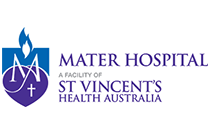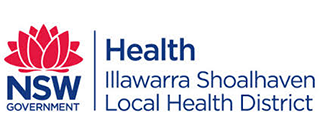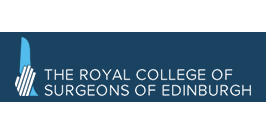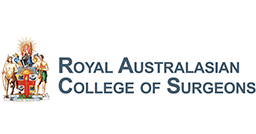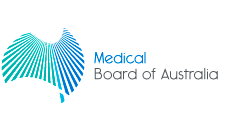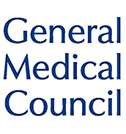Knee Arthroscopy
Condition
Meniscal Tear
One of the most common conditions is a tear of the meniscus. The meniscus (single) or menisci (plural) are the shock-absorbers for the knee, absorbing up to 60% of the loads through the knee. The meniscus is a crescent-shaped disk of cartilaginous tissue found in several joints in the body. The knee joint has two, and is held in place with ligaments. Their main function is to reduce friction during joint movement and to help with stabilizing the knee.
It is common to get tears in the menisci, usually through twisting trauma. These tears are common in middle age, and less so in younger patients. Degenerative tears occur in the older patient who has some arthritis in the knee and degeneration of the menisci.
In most patients, these tears can be diagnosed clinically on history and examination, but usually the patient will have an MRI scan. These are accurate at diagnosing not only the presence of a tear but also the type and position. If the tear is in a young patient and in the peripheral region of the meniscus where there is still a blood supply, then repair of the meniscus is possible, using arthroscopy and small incisions in the side of the knee. In older patients and where the tear is in the area of the meniscus with no blood supply then debridement of the meniscus is performed.
Arthroscopy is used to identify the tear and instruments are used to trim the torn area to a stable edge. This will usually resolve the patient’s symptoms of pain and catching. Patients with tear in a degenerate meniscus secondary to arthritis rarely undergo arthroscopic debridement.
Chondral Injury and Osteochondral Defect
Trauma can cause tears in the articular cartilage, loss of a small area of cartilage and can also cause a divot on the surface when the injury includes bone. These OCD, or Osteochondral Defects can rapidly progress to osteoarthritis due to the damage to the cartilage surface and increasing forces in the area. The fragments can become a ‘Loose body’ and float around the joint, occasionally getting caught in-between the bones causing catching and locking. This causes extreme pain and inflammation. Arthroscopy is used to identify the OCD and debride the area. Removal of the fragments is performed if they are too small. Fixation with screws can be performed if the fragment is large enough. Further management of chondral or cartilage defects is death with here.
Treatment
Treatment for meniscal tear
Non-operative treatment may include ice, anti-inflammatory medication and physiotherapy. Surgery may be indicated when these do not work.
Arthroscopy (Arthro = Joint) (Scope = small camera system)
An Arthroscopy is keyhole surgery that allows the surgeon to look at the inside of your knee through two or more small incisions. A small camera is inserted into the knee through a small (1cm) incision, and the images are relayed to a television screen. Specialist instruments are introduced into the joint through another small incision. This is usually carried out under a general anaesthetic.
What conditions are treated with an Arthroscopy?
Arthroscopy is usually performed to treat symptoms like pain, catching, locking, swelling or instability of a joint.
The Operation
Arthroscopies take between 20-60 minutes, usually under a general anaesthetic. You will normally be admitted to hospital for day surgery but in some instances an overnight stay may be necessary.
Once anaesthetised a tourniquet is placed around your thigh. This is inflated throughout the procedure and minimises bleeding within the knee. The tourniquet rarely causes a problem, but may leave you with a “tight” feeling around the thigh for a day or two. Two to three small incisions are made at the front of the knee, one through which an Arthroscope is inserted and another to insert the instruments required during the procedure. Normal Saline is flushed through the knee and this helps to inflate the joint and makes viewing the knee structures easier. At the end of the operation, the fluid is drained from the knee.
Local anaesthetic is injected into the knee to minimise discomfort after surgery. Stitches close the wounds and a relatively tight bandage is then applied. The stitches will be removed after 10 days. A day or two after you go home your bandage can be removed and you will left with waterproof dressings. A double tubigrip bandage will be applied and should be used for at least 7 days.
You should come round from the anaesthetic relatively quickly and leave hospital the same day.
What happens after the surgery?
You will have individualised instructions before you go home on how much weight to put through your leg, and when you can start physiotherapy. Your GP and physiotherapist will be sent a summary of the operation. You will have a combined appointment in my (out patient) clinic 10-14 days after surgery and with my practice nurse. At this appointment, the dressings will be removed, sutures removed and further care will be discussed as will any follow up treatments that may be required.
Risks
All operations carry a small risk of complications. Complications occur in less than 1 in 100 cases but include:
Thrombosis – Any lower limb surgery increases the risk of blood clots in the veins. The use of HRT and oral contraceptive pills may increase this risk and may need to be stopped before surgery. You will be advised on this.
Most patients do not require medications to prevent DVT after arthroscopy. If you are high risk however, you will need prophylactic treatment.
Infection – can occur at the incisions or within the joint.
Bleeding – This does sometimes occur after surgery and may require change of dressings and pressure. If severe it may require a return to theatre.
No improvement – Despite a surgeon’s best efforts this procedure may not cure your symptoms. If this is the case other options of treatment will be discussed with you.
Injury to other structures – this is to structures inside or near to the joint. This is extremely rare but there are occasionally injuries to the vessels and nerves around the knee.

